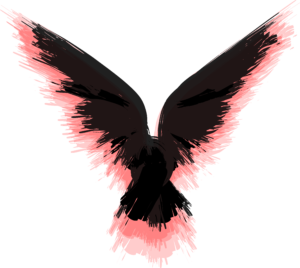Does your character hunt and wants to use all of what they catch? Do they like bacon bits? Do they know how to use a larder? Does lard cause much smoke while cooking?
Making lard and tallow is called rendering fat. Lard is rendered from pig fat, and tallow is made of beef or deer. They are called beef tallow and deer tallow. However, there are other types of tallow, just less common. Rendering fat means removing water from raw fat to make it shelf stable. That’s the fancy way of saying it won’t go bad quickly.
Making lard and tallow is actually a relatively easy process and sounds harder than it is. Many Amish children help their parents with this and can do it alone by their preteen years. There might be a few hiccups when learning, but rarely are there any catastrophes.
The amount of lard or tallow you make at one time is called a batch. You can make large or small batches of tallow at a time. Small batches might be raccoons or opossums. Large batches will likely be made of several of the smaller ones, or a larger animal such as deer, pig, cow, bear, buffalo, etc.
There are two methods for rendering fat. The wet method and the dry method. Both produce the same result and start with raw fat.
Raw fat means that it is fat with as much meat cut off of it as possible. There will always be small amounts of meat attached at this point, which is expected.
The dry method is done by placing the raw fat into a pot or a modern crockpot and bringing it to a simmer. It is then placed on a low temperature or moved further away from the heat of a fire so it simmers but isn’t boiling. If it gets too hot, it will turn brown and feel and taste different, but it can still be used. It is important to stir this method often or risk burning it.
The wet method is very similar but with water added. I know it sounds weird to add water when you want to get rid of the water but trust me, it works. I cannot find a set amount to add. Most people add about 1/4 of the pot, or after adding the raw fat to the empty pot, they add water to about 1/4 of the remaining room inside the pot. It will then be simmered on low heat. This method would be used if someone used a crockpot to render the fat. Remember the lid to the crockpot will be left off during rendering.
In both ways, it is normal to see steam, which means the water evaporates as you want it to. The fat will need to be rendered for roughly 20 minutes for every one pound. You will know it is done when all the fat has turned into liquid and no longer looks cloudy. The small bits of meat that were attached to the fat, should be only the meat left. They look and taste similar to bacon bits.
When it is done, it will need to be strained into glass jars. It can be strained with a small holed metal strainer or cheesecloth. I have seen people who use hand towels and even t-shirts to strain them. It is a bit messy and will be hard to wash, but it works. Remember that glass breaks with extreme temperature changes, and the glass jars must be warmed before you place the hot lard in them.
After the fat has been strained, it will need to cool. This will cause it to solidify. Do not cover it when drying, as it can cause steam to be trapped, which will cause it to retain the water you are trying to get rid of. Some people let the jars cool slowly at room temperature, while others use the refrigerator or a root cellar if they are off the grid. I have also seen them cooled in springs with a low water level, so they are not submerged.
If using the dry method, this is all that is needed until it is cooled and needs a lid. If using the wet method, the water will need to be drained off. The water will have separated from the lard during the heating process, and the water will be easy to remove. I suggest letting the lard have a little time to air dry the areas that were by the water before storing. Having the water in on the lard before storing causes it to spoil faster.
Once lard and tallow are cooled, they should be white and have a creamy texture. Lard should not smell or taste like bacon after rendering. After applying a lid, they can be stored for 3 to 4 months at room temperature and a year in the refrigerator. Historically, lard has been stored in boxes, barrels, cloth, and even pig bladders. I guess that is one way to make sure nothing goes to waste.
A common historical meat preservative method was called a Larder. The meat would be placed in a barrel, and the rendered fat would be poured in to cover the meat. The barrel would be stored in a cool, dry place.
Lard and tallow are used in cooking, proper care of cast iron, and many more things. Historically they were a pantry staple and likely would be in an apocalyptic story. Both would make great barter and trading items, as they can be used for many more things than just cooking.
Fun fact: Lard is healthier than many people today realize. I’m not arguing what is healthiest or what you should eat, only giving you a few interesting facts, including that lard has no trans fat, which makes it healthier than oils and shortenings containing hydrogenated fats. Lard has less saturated fats and cholesterol than butter and contains healthy monounsaturated fats, just like olive oil. It also has a high smoke point, meaning it smokes very little when cooking. I will leave a link to the full article about this in the show notes.
What could go wrong:
Likely to go wrong: Your character did not heat the glass jars, and they shattered. This could cut someone or cause hot lard to land on them. Hot lard would burn your character or someone with them.
Likely to go wrong: Your character used a shirt to strain the fats, and the grease left in the shirt is hard, if not impossible, to get out.
Possible to go wrong: Your character covered the fats while they were drying, and it caused water to stay in the jar. This could cause it to go bad quickly.
Possible to go wrong: Your character didn’t stir while rendering and burned it.
Unlikely to go wrong: Your character used something to strain the fat that did not stop all of the pieces of meat from going into the glass jar. Your character will now have hard bits in their lard, and this could cause it to go rancid.
Unlikely to go wrong: Your character strains with a cheesecloth, and when trying to wring out as much as they can, they burn their hand. This is common but not normally more than a first-degree burn. It could be more, but it is not likely to be.
Improbable but technically still in the realm of possibilities: Your character could heat the rendered fat to a temperature that ignites the fats and causes a grease fire.
Improbable but technically still in the realm of possibilities: Your character takes the rendered fat to strain it and drops it, causing them to be covered in burning hot lard. This would not be easy to just wipe off and would likely cause severe burns!
Helpful Links to Learn More:
Rendering fat:
https://www.thespruceeats.com/what-does-render-mean-2313707
https://www.milkwood.net/2015/11/06/how-to-render-animal-fat-making-lard-and-tallow/
Rendering Lard Videos:
How long home made lard can be stored:
Benefits of Lard:
https://www.webstaurantstore.com/blog/3068/what-is-lard.html


